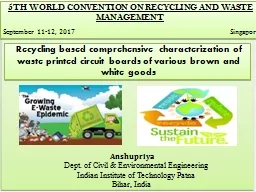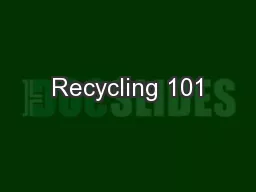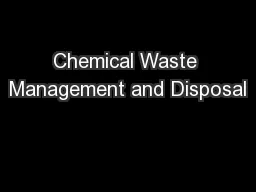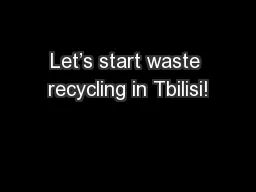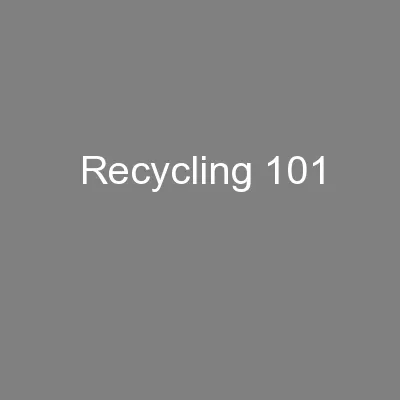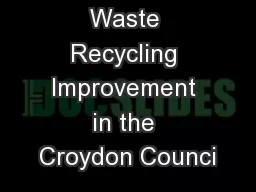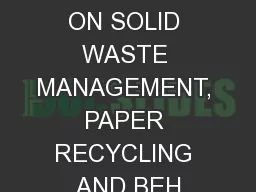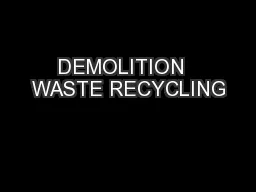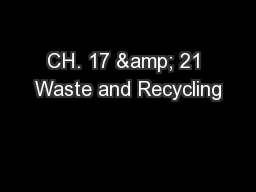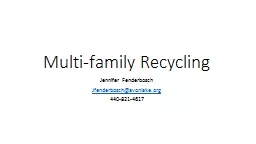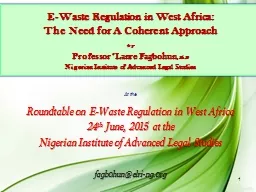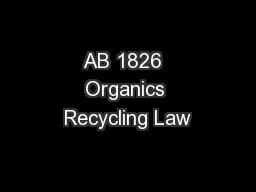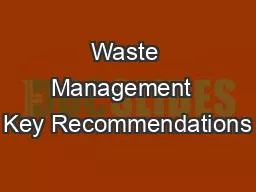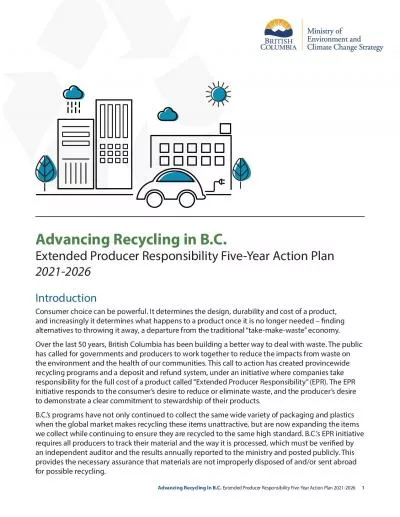PPT-5TH WORLD CONVENTION ON RECYCLING AND WASTE MANAGEMENT
Author : min-jolicoeur | Published Date : 2019-11-27
5TH WORLD CONVENTION ON RECYCLING AND WASTE MANAGEMENT September 1112 2017 Singapore Recycling based comprehensive characterization of waste printed circuit boards
Presentation Embed Code
Download Presentation
Download Presentation The PPT/PDF document "5TH WORLD CONVENTION ON RECYCLING AND WA..." is the property of its rightful owner. Permission is granted to download and print the materials on this website for personal, non-commercial use only, and to display it on your personal computer provided you do not modify the materials and that you retain all copyright notices contained in the materials. By downloading content from our website, you accept the terms of this agreement.
5TH WORLD CONVENTION ON RECYCLING AND WASTE MANAGEMENT: Transcript
Download Rules Of Document
"5TH WORLD CONVENTION ON RECYCLING AND WASTE MANAGEMENT"The content belongs to its owner. You may download and print it for personal use, without modification, and keep all copyright notices. By downloading, you agree to these terms.
Related Documents

